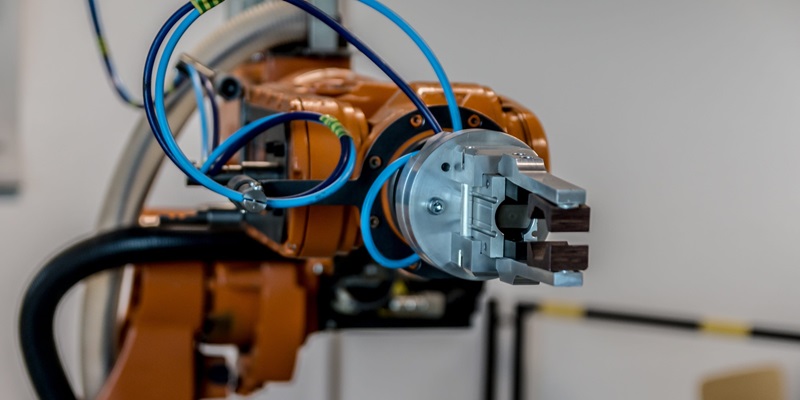The convergence of data science and robotics is revolutionizing technology as we know it. Robots are now equipped with advanced cognition and autonomy, thanks to the rich insights derived from data science. This intersection is forging a new era where robots can understand and act within their environment in remarkably advanced ways.
Data science adds layers of intelligence to robotics, allowing for intricate data analysis that drives better decision-making. This partnership is enhancing robot perception, enabling complex interactions with surroundings, and pushing the boundaries of what automated systems can achieve.
The integration of these fields is poised to redefine the future of automation. As robots become more adept at interpreting vast amounts of data, their roles in various industries will undoubtedly expand, reflecting the vast potential of this technological synergy. This blend of data-driven decision-making with robotic precision is not just an upgrade; it is setting a new standard for the capabilities of autonomous systems.
Elevating Robotic Perception with Data Science
Robots equipped with data science tools are setting new standards in environmental assessment and comprehension. Computer vision and sensor fusion stand out as technological innovations that are substantially altering robotic perception. In industrial automation, robots can now identify and sort items with remarkable accuracy, boosting productivity and safety. The transportation sector benefits from autonomous vehicles that perceive and react to traffic conditions in real time, while healthcare robots interpret patient data to provide personalized support. These advancements signify a leap forward in the applications and functionalities robots can offer in an array of industries.
The improvement of robot perception is not solely beneficial for complex tasks; it also simplifies user interaction. Enhanced object recognition capabilities mean that robots can better navigate and interact within human spaces. They can now perform tasks ranging from warehouse logistics to domestic chores with ease that was previously unattainable. This shift towards data-driven perception heralds a future where robots are not seen as mere tools but as perceptive partners capable of understanding and adapting to the nuances of their operating environments.
Machine Learning: The Catalyst for Robotic Adaptability
Machine learning is revolutionizing robotic adaptability. Reinforcement learning allows robots to learn through experience, honing their tasks for peak efficiency. For example, assembly line robots can refine their actions to speed up production while maintaining precision and safety. With supervised learning, robots perform complex tasks by learning from labeled datasets. Conversely, unsupervised learning enables robots to detect patterns and anticipate changes in their environment, enhancing their reaction to new situations.
These advances allow for real-time robot adaptation in ever-changing settings, fostering human-machine collaboration. Autonomous robots can now navigate and adjust to human-centric environments seamlessly. As machine learning technology progresses, robots are poised to undertake increasingly intricate roles, mirroring the adaptability seen in natural organisms. This intersection of robotics and AI marks a leap forward in how machines learn, work, and evolve alongside us.
Predictive Analytics in Robotic Maintenance
Predictive analytics stands at the forefront of revolutionizing robotic maintenance. By harnessing the power of sensor data and maintenance records, predictive models can foresee equipment failures, preemptively averting costly downtimes. This prescient approach to maintenance translates to tangible benefits: reduced operational costs, enhanced efficiency, and extended lifespan for robotic systems. The data-driven foresight ensures that robots remain operational, minimizing interruptions and maximizing productivity.
In fields where reliability is critical, such as in the manufacturing or energy sectors, predictive maintenance offers an invaluable advantage. The capacity to predict and prevent failures before they occur allows for a more seamless operation, with robots consistently performing at their peak. This proactive stance on maintenance is not just about reducing costs; it’s about ensuring that robotic systems can be trusted to function without fail, bolstering the overall confidence in automated systems and cementing their role in various industries.
Advancing Human-Robot Interaction
Human-robot interaction has greatly benefited from data science advancements. With natural language processing (NLP), robots now understand and engage in conversations with humans, leading to more relatable interactions. Combined with gesture recognition, these robots can interpret human body language, enhancing communication beyond words. Such improvements are particularly influential in sectors like customer service and healthcare where picking up on subtle cues is critical for service quality.
As robots become better at following human directions, their usage becomes more widespread. This leap in interface sophistication marks a turning point for tech integration into daily life, paving the way for human-robot collaboration in various settings. Through this synergy, humans and robots are able to work together, each enhancing the other’s strengths. This partnership promises to propel technological advancement, particularly in how we interact with machines in our routine activities.
Swarm Robotics and Collaborative Decisions
Swarm robotics represents an exciting foray into the collective decision-making power of multiple robots. Data science plays a vital role in orchestrating algorithms that enable these robotic swarms to act as a cohesive unit. Operating in a collaborative fashion, swarm robots achieve tasks that would be impossible for a single robot to tackle alone, making them ideal for deployment in large-area operations such as environmental monitoring, agriculture, or disaster response.
The potential of swarm robotics is not confined to mere task execution; it embodies the principle of emergent behavior where simple robots create complex outcomes. The distributed decision-making process, fueled by data science, allows for a level of scalability and flexibility unique to this approach. With continued advancements, swarm robotics is poised to redefine collaborative efforts across multiple domains, providing a glimpse into a future where autonomous agents work in harmony to achieve common goals.

